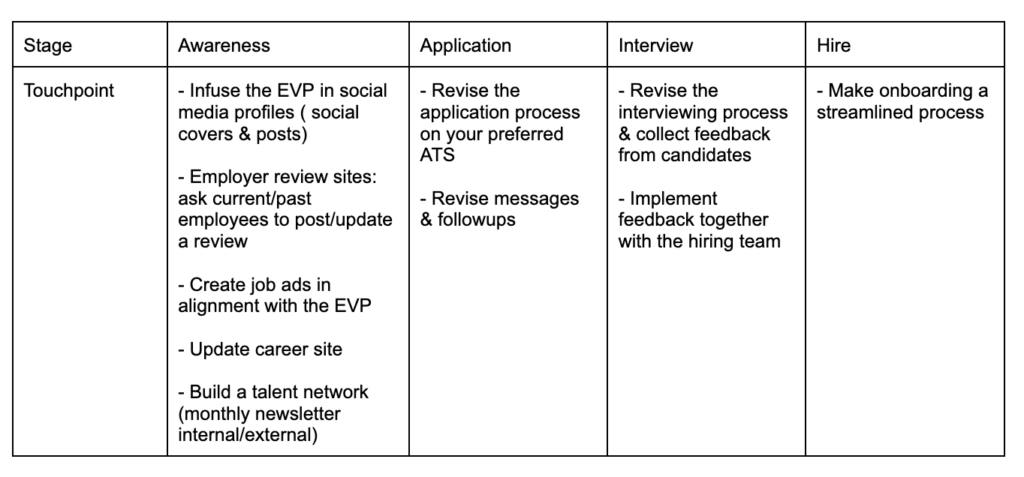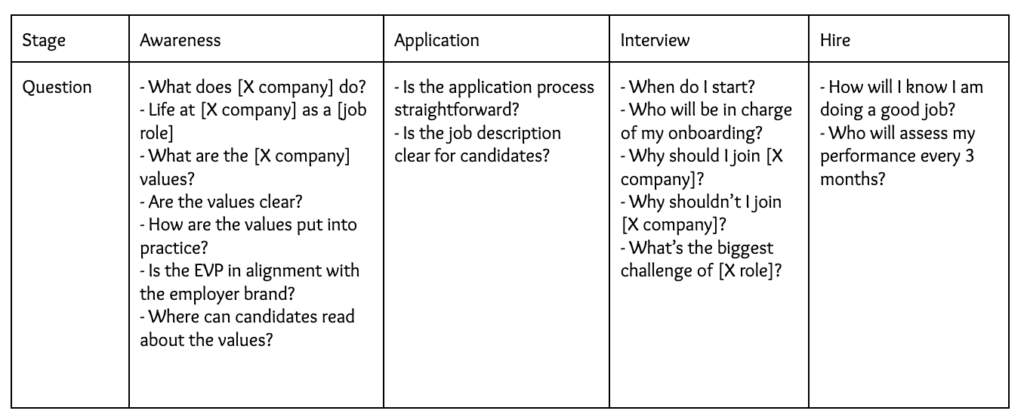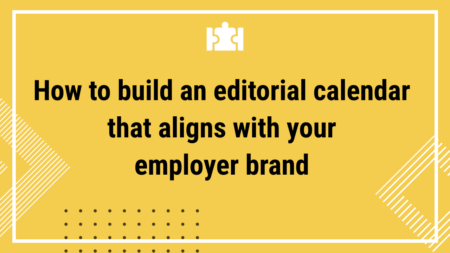Candidate experience impacts the way external candidates perceive your company; a perception that builds up following multiple candidate-company interactions, ultimately shaping your employer brand. Whether good, bad, or neutral, your reputation as an employer draws candidates in or out of your recruiting funnel. In this context, a strong employer brand can drastically increase retention, reducing employee turnover by nearly 28%.
Picture it this way: if employer branding is like a hook for talent, candidate experience is the fishing rod that makes sure candidates are safely delivered to shore to become a new hire. The more you focus on strengthening your brand as an employer the better chances you have of building a candidate experience that attracts and retains top talent.
Why candidate experience should be priority No. 1?
How candidates are treated reflects upon how employees are treated. If you’re not dedicated to creating a positive first impression you won’t be able to transform candidates into new employees. That’s why employer branding matters. Sadly, only about 30% of talent acquisition professionals have a strategy in place for strengthening their employer brand. Some of them know the reasons behind candidates rejecting an offer. The top reasons are:
- 58%: better offer someplace else
- 41%: financial compensation is unsatisfactory
- 36%: better counteroffer
- 31%: inadequate benefits
- 12%: inadequate hiring process
Following the events of last year, the job market in 2023 is very candidate-centric, and whether we like it or not, successful hiring means playing by the rules of the candidate. But more importantly, now is the time to prove that your employer brand is genuine. How? By turning the Great Resignation into the Great Retention.
Business leaders should start understanding why people are leaving their jobs in order to come up with a realistic retention strategy. A recent report highlights that the two main reasons are inadequate management (43.7%) and unsatisfactory financial benefits (43.4%).
For candidate experience to thrive, leaders must first acknowledge that it goes hand in hand with employer branding. The stronger your reputation the better chances you have to ensure that the right candidates become motivated new employees who won’t leave in six months.
Main roadblocks that lead to poor candidate experience
Technology can be a great friend or a feared foe in your interaction with job candidates. Whether passive or active, job seekers expect companies to have more than just nice reviews on Glassdoor. They want an informative, tailored, and fast application process, optimized interviewing, proper onboarding, and perks that go beyond financial incentives.
In fact, 34% of job seekers who went through a bad experience will share it online and talk about it offline with friends and family, creating ripple effects that impact your company’s employer brand in the long term. Talent Board has a useful calculator to help you learn more about lost revenue triggered by poor candidate experience. Even though it only gives a rough estimate, it does help pinpoint that improving both employer branding and recruiting processes helps increase company bottom line.
Another critical roadblock leading to poor candidate experience is the lack of human interaction at various stages in the recruitment process. While some recruiters still leverage general LinkedIn messages to connect with candidates, others make interviewing feel more like an intrusive interrogation. The willingness to connect is lacking as HR managers are pressured to simply close a hire, not necessarily to retain the hire in the long term.
“Perception of fairness is key to a positive candidate experience — and that’s especially important in the screening and interview process when bias is most likely to creep in.” (Candidate Experience Benchmark Research, Talent Board)
How to build a memorable candidate experience
With 60% of candidates dropping halfway through an application due to complexity or length, a proper candidate journey that communicates your employer brand can improve quality of hire by 70%. Where should you start?
The first step is to map out the journey/interactions a candidate is likely to have with your company throughout the recruiting funnel. Audit the overall experience and check to see if your EVP and overall employer brand is being communicated properly via messages, visuals, communication frequency, and technology at each touchpoint:

At every stage in the process, put yourself in the shoes of the candidate and draft questions, fears, concerns, hopes, etc., they are likely to have at each stage:

Last but not least, you’ll want to measure results: conversion rate, quality of hire/applicants, and candidate feedback. There’s no one-size-fits-all approach to building a stellar candidate experience. In the initial stages, the most important element is to become aware that it matters, and that it can change your entire recruitment process. Yes, it does take time and resources to be implemented, but it’s the only way to hire and retain talent that actually matches your employer brand.
Studies show that 75% of candidates look at a company’s reputation before applying for a job, and 66% of them argue that good candidate experience increases the likelihood of recommending the company to others. Leaving stats and numbers aside, it’s safe to assume that following past events, candidates are now more careful when applying for jobs. If you want to be seen, honesty and transparency when building your employer brand help you create a memorable candidate experience.






